‘It’s a luxury to be understood’- Ralph Waldo Emerson.
When it comes to products, it is the other way around.
Rule #1 in product business: Never make it feel like a luxury for your users. It should be your very basic offering. Every aspect of your product should affirm to the users that it’s made for them.
You might ask ‘Hey, but the user base consists of different types of users’. Yes, even in niche-focused businesses, user needs differ. So how do you cater to all of them?
Segment customers into groups based on some similarities among them.
Also, you need to know the right target to aim your arrow. Segments are here to help you understand the target (market and users) well. Expecting a random shot to reach the right place: That’s how a strategy without segmentation is.
Let’s dig deeper into the user segmentation.
What is user segmentation?
User segmentation is the process of grouping users based on certain similar characteristics. Characteristics, here, represent the user’s relationship with the product.
Let’s take an example here, age. It’s a factor that influences their preferences, choices, and needs. You can make use of this factor to segment customers. The people in one particular segment are likely to respond similarly to anything related to the product.
Sounds like user personas, doesn’t it?
But user segments are very different from personas. Segments help you understand the market opportunity by knowing what different users want. User personas are like the next level to segments. They help you know why the users want what they want. With personas, you know their motivations, frustrations, and goals.
User segments help you get a basic understanding but persona makes it more personal. They can be used together to yield great insights about the user.
Types of segmentation
How to segment customers? There are few major categories of segmentation. A few are superficial, while others are a little profound in the details they provide.
Demographic
This way of grouping users is very basic.
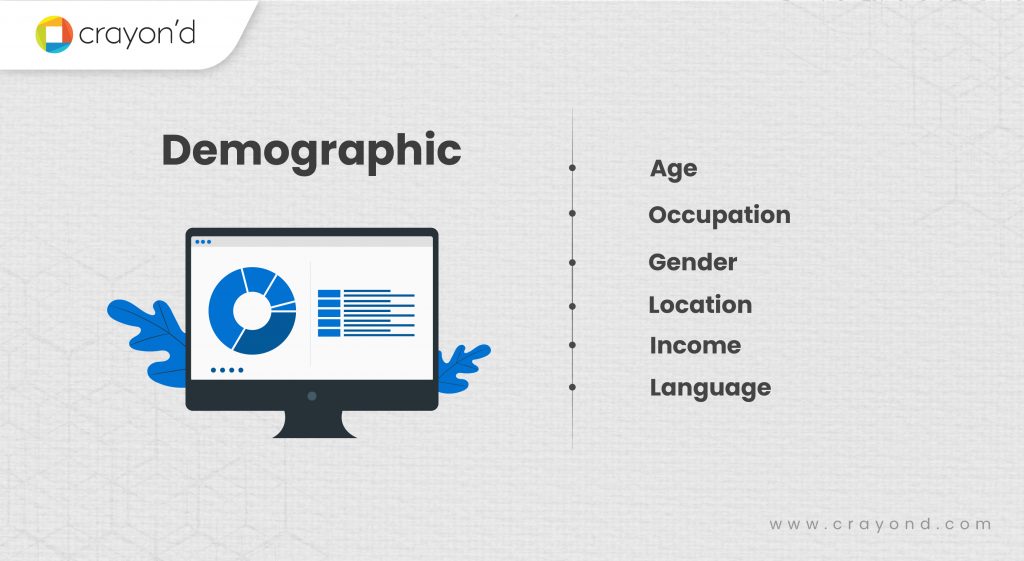
The data here is fundamental and not in-depth. Hence, the research and information gathering is easy in this. In the case of existing users, you can make use of the data in your hands for segmentation. Demographic is the most widely-used category.
Geographic
Place of stay is an element that has a high influence on the product preferences and needs. It’s obvious that when people live in the same geographical area, they’ll have certain common needs.
Example: India is a country with vegetarians. McDonald’s came up with McAloo Tikki and McVeggie burgers to serve that segment here.

Here’s how segmentation is done,
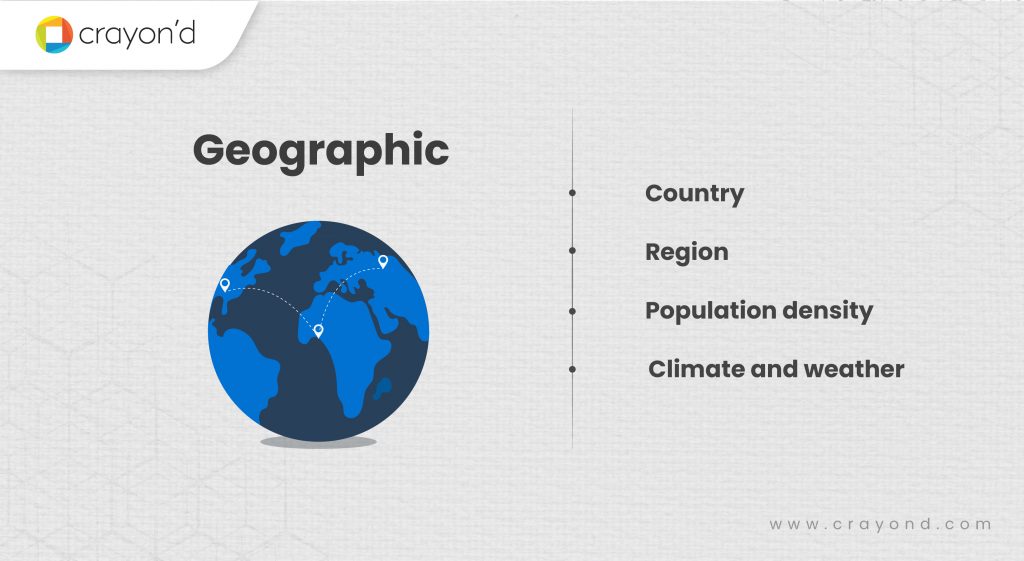
Behavioral
Behavioral segmentation is done based on the user’s actions. User actions here, again, are related to the product. It will be pointless to consider actions that are irrelevant to the product-user relationship.
Consider you are an online streaming business. Think of looking for behavioral information like ‘food ordering time’. It’s pointless, isn’t it?
Behavioral information can be something like this for the online streaming product,
- What do they watch more—movies or series?
- Which particular time of the day do they use the app?
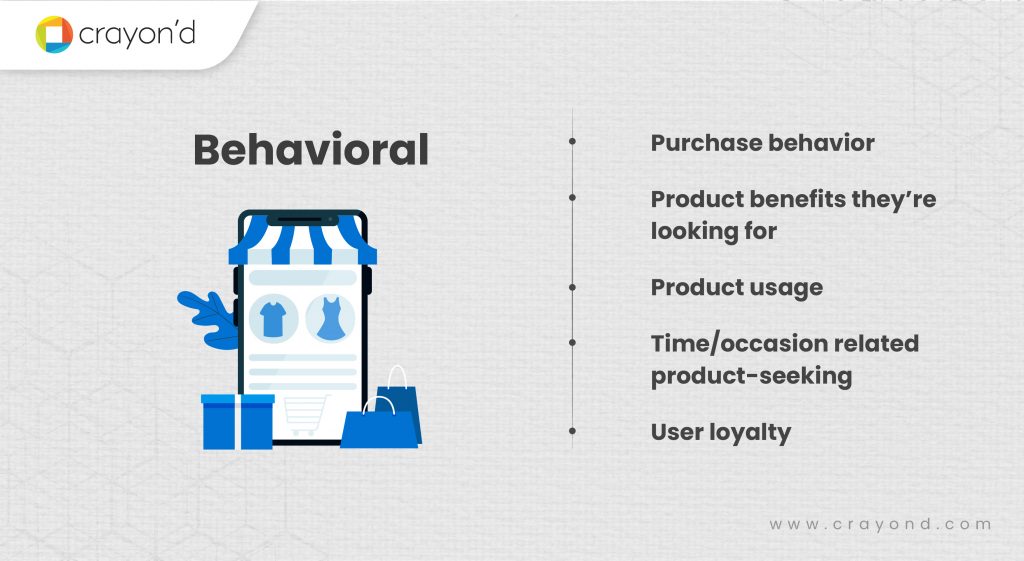
It is not formed with surface-level information. You got to get in a little deeper research here.
Psychographic
Just as the name denotes, this category is all about user psychological factors. It segments the user based on their qualitative traits. The information needed for this segmentation is not so obvious.
Just like behavioral segmentation, this one is also profound. And it’s quite difficult as well. It’s not just data that can help you here. You need real users.
General psychographic segments are focused on following,
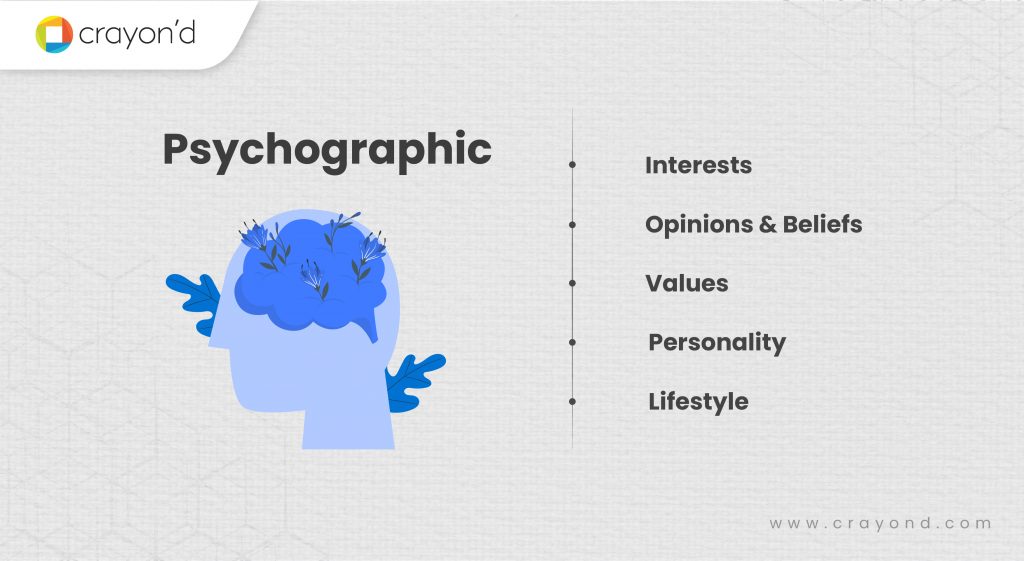
Firmographic
Firmographic is for segmenting ‘businesses’ in place of users. In easy words, imagine individual people as users. Now replace them with firms/companies. It’s the firms that the business is going to serve.
The commons ways to segment them here are,
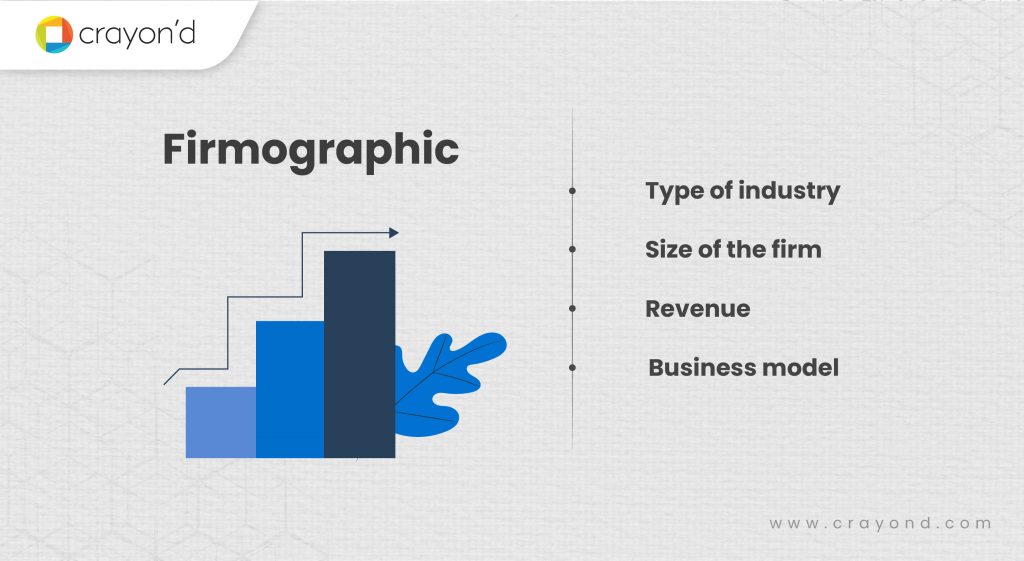
Technographic
‘It’s just all technological.’
Technological fluency and preferences are the priority here. The users have different levels of affinity and choices when it comes to technology.
The segments here are centered on,
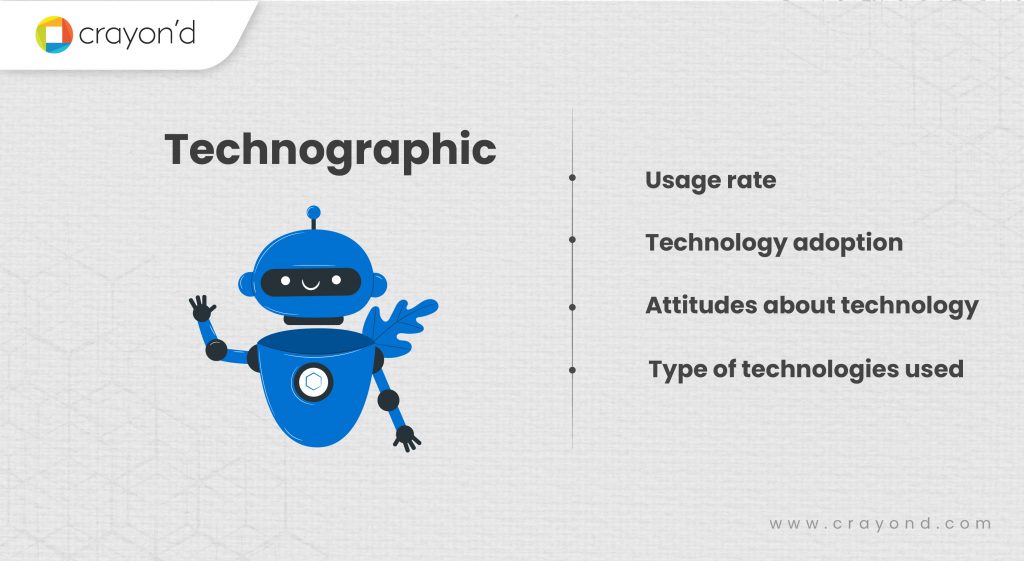
This can be used either for individual user segments or for enterprises.
In the segmentation, there’s nothing such as a wrong choice of category. It is unique to every product. You just need to think through to pick up the right method.
Benefits of user segmentation
1. Efficient marketing
Marketing is about many things. But the two most important ones are
- Users
- What does number 1 like?
Segmentation is about setting the base for user knowledge. The right message at the right time to the right people is very powerful. It makes a huge difference. Segmentation can help you figure out all three. And with spot-on marketing, your product can go places.
2. Better customer experience
Customer experience is important now, more than ever. It drives the entire product business landscape. It’s the key consideration for product purchase. The rest of the customer journey is also dependent on the customer experience.
User segments grant you the details of different groups you cater to. This awareness can help you come up with strategies for a personalized customer experience. Personalization can do wonders when used appropriately.
Why?
Imagine saying that you like something to your friend in a random conversation. It’s great when they remember and do something about it, isn’t it? That’s how personalized CX feels like. It adds an emotional touch to the process. It brings a human quality to products.
In fact, 80% of customers are more likely to purchase a product or service that provides them a personalized experience.
User segments can help you elevate your customer experience in various areas of your business.
3. More retention
Segmentation helps in improving user retention in 2 ways.
- Customer satisfaction
- Better customer experience is the key to user satisfaction. What do satisfied users do? They will stay and probably even bring in new customers. Segmentation aids in better CX and thereby increasing retention rates.
- Special attention
- Segmentation helps you know which category of customers are about to churn. You can come up with specific strategies to make them stay.
How to implement user segmentation?
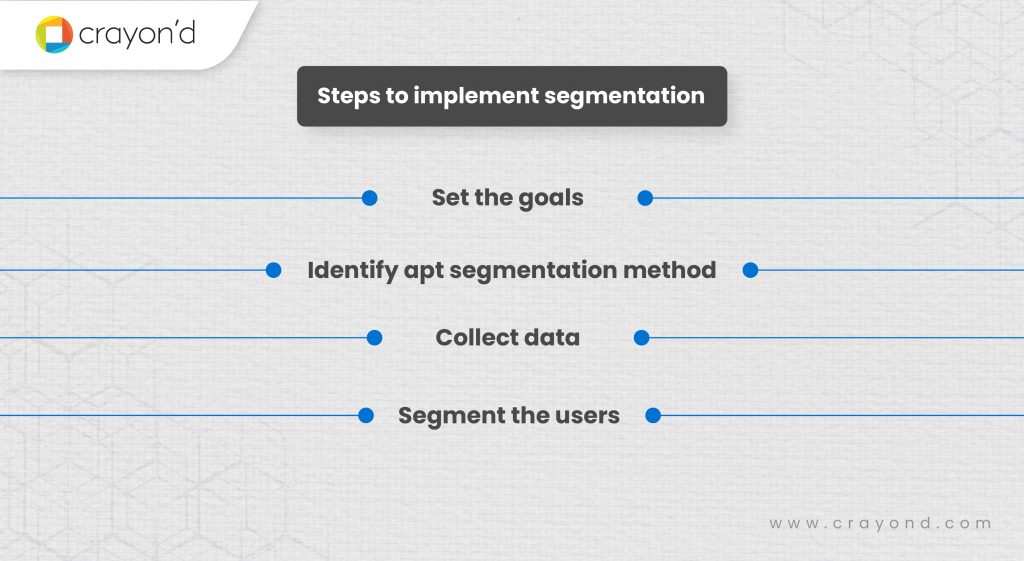
Set the goals
Segmentation can serve various purposes. You should need to be sure what yours is. Without a clear goal, segmentation is just pointless.
Ask ‘What do I want to attain from this segmentation?’
Your answers can be anything— a reach-out strategy, a personalized user experience, targeted marketing, etc. If you don’t have the answer, segmentation will be all over the place. It’s the goal that puts this process in the right direction.
Identify the apt segmentation method
You need to determine the segmentation method to use. It determines the rest steps — mainly the data collection. This is the tricky part and you need to think through it well. The segmentation method should align with your business goal. For example, to improve engagement.
If it doesn’t, you will not receive the complete value of the segmentation process. Choose wisely!
Collect data
You have a goal now. Is that enough? No.
You need user data. Only then you can segment your users based on your goal. Enter the grounds and start collecting user data. User analytic tools can be of great help here.
You can make use of different user research methods to gather the data. This data drives the upcoming steps. It should contain the necessary details to segment the users. Data with less/no insights will only lead to poor segmentation.
Segment the users
You know the method and you have the data in your hands now.
Plunge into segmenting the users. Analyze the data in depth. Look for similarities among the users and group them accordingly. Make sure that your user segments are not vague.
What’s remaining now is making use of the segments and coming up with strategies.
User segmentation best practices
- Right segments
- Segments should aid the strategy process and not complicate it. It should be in the right size—neither too less nor too much. More segments make it difficult to come up with implementable insights. Fewer segments don’t serve the purpose of segmentation in the first place. Very narrow segments mean there are not enough customers to cater to. If you stuff too many into your segment, it is not effective at all.
- The secret is finding the right number.
- Clear and distinct differences
- Segments are created to ensure different needs are heard, seen, and considered. If there are no different needs among the segments, why even do that? There must be visible changes that differentiate one group from another.
- If two groups are similar or just have very minor differences, strategizing two ways can be difficult. It’s also a waste of time and strategy.
- Test and reassure
- You cannot create perfect segments at the first try itself. You cannot just go ahead with what you have segmented on the first attempt.
- Compare the segments. Check if they are distinct and are not overlapping. Make sure that they match with business objectives. If not, redo the segmentation and test. Reassure if the segments are right before moving to the next step.
- Update segments
- Segmentation is not a one-time process. Users evolve and so does the market. You can’t expect your users to stay under a particular category forever. This is why it’s essential to keep updating the segments.
- Review your segments while keeping an eye on the market trends. When you find something major changes happening, it’s time to start the segmentation work again.
- Old segments with updated customers don’t work well.
Endnote
For a product owner, intuition is a very helpful skill. But you cannot just rely on intuition alone all through the process. When it comes to user needs, you cannot take risks.
Confirmation is another thing you need — confirmation about the market need, users, their nature. It gives you the confidence to act. The confirmation comes with user knowledge.
User segmentation is the first step you take in the act. Every user is valued. You need to take different routes to satisfy different groups. User segmentation is your map here. Hold the scroll and advance towards the goal.







Add comment